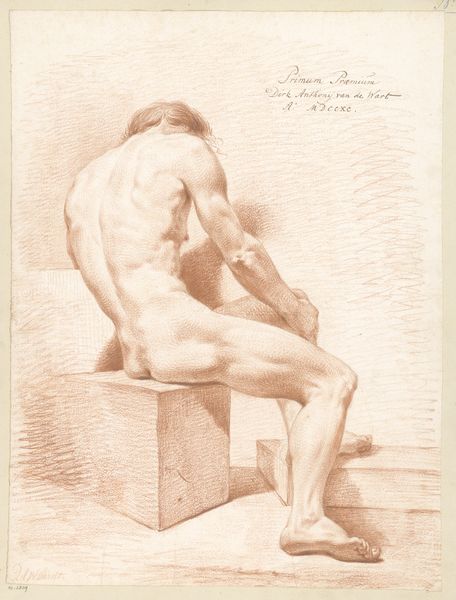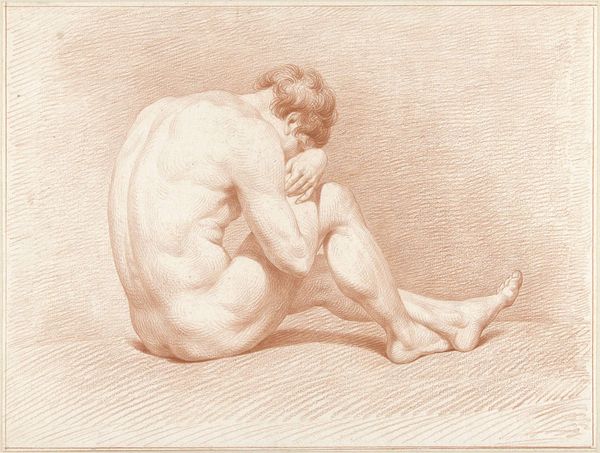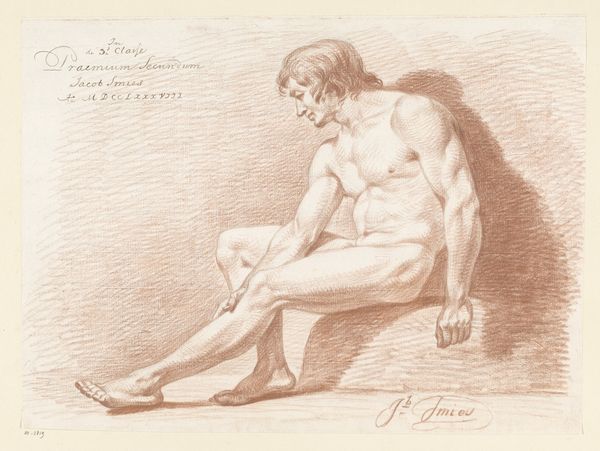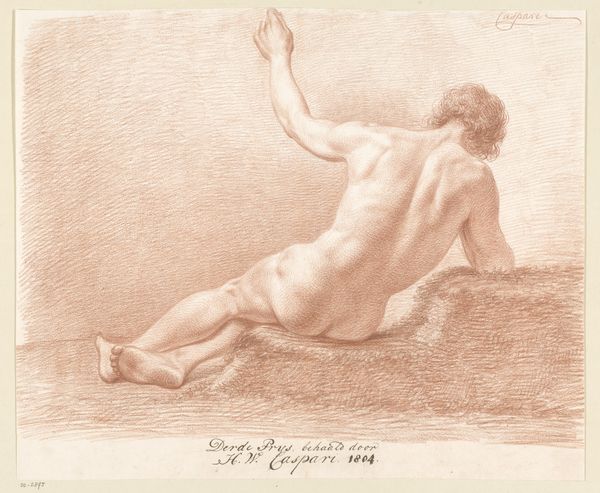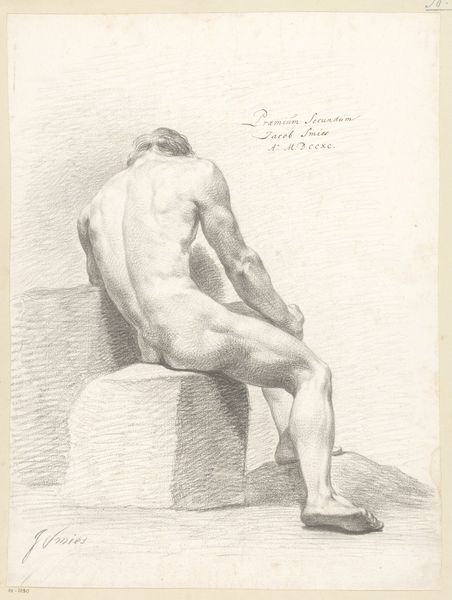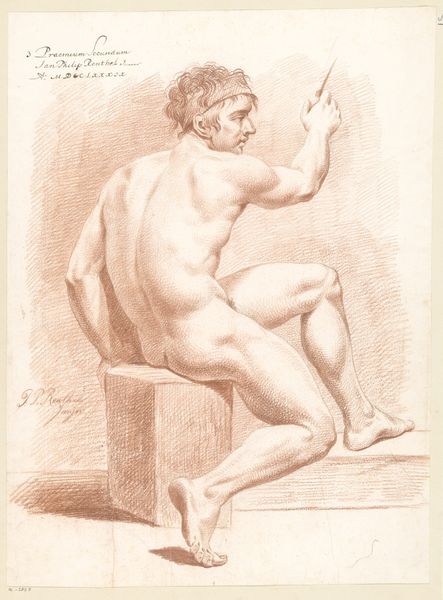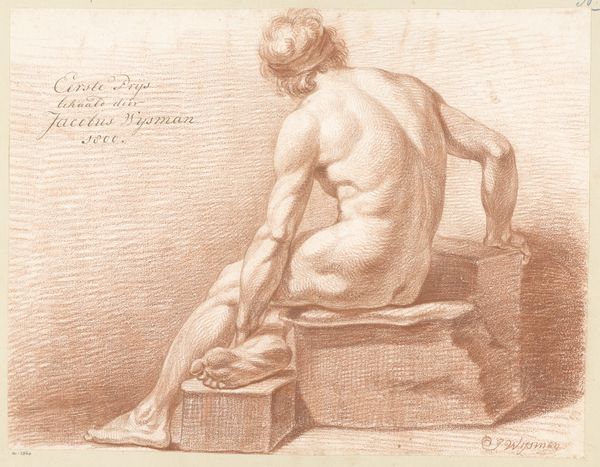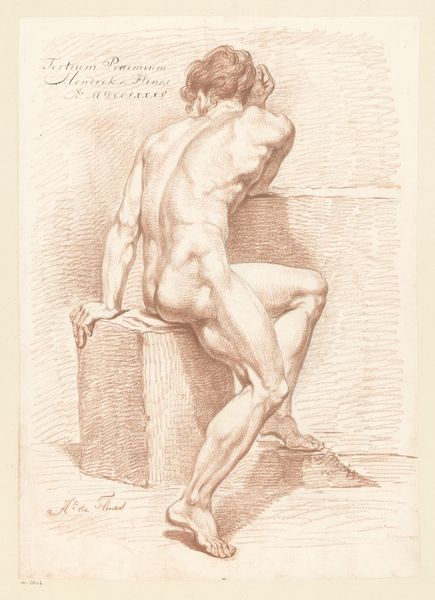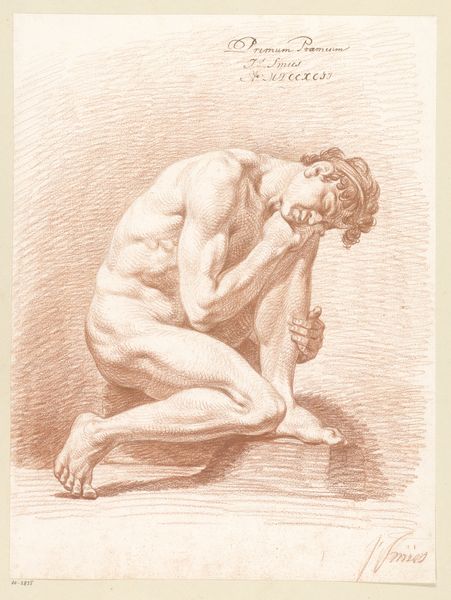
drawing, pencil
#
drawing
#
neoclacissism
#
pencil sketch
#
charcoal drawing
#
figuration
#
portrait reference
#
pencil drawing
#
pencil
#
academic-art
#
nude
Dimensions: height 381 mm, width 481 mm
Copyright: Rijks Museum: Open Domain
Editor: We’re looking at “Zittend mannelijk naakt, op de rug gezien,” or "Seated Male Nude, Seen From the Back," by P. Luypen, possibly from 1809. It's a pencil drawing that has a subdued and somewhat melancholic mood, don't you think? How do you interpret this work within its historical context? Curator: The beauty of Neoclassical art often masks a complex web of power dynamics. What do you make of this almost standardized pose? Is it simply an exercise in artistic skill, or could we see it as an attempt to idealize the male form, and by extension, male authority in a post-revolutionary world? Think about who gets to be represented, and how. Editor: So, you're suggesting that even seemingly neutral artistic choices can reflect broader social structures? Curator: Precisely. The ‘neutrality’ of academic art, as it's often called, is itself a construction. This work was a prize-winning piece. What criteria do you think were valued in awarding such a prize? Editor: Probably technical skill, anatomical accuracy, adherence to classical ideals… Curator: And what cultural values are embedded within those ideals? Masculinity, order, reason... It's all interconnected. What isn't visible is also telling, like the lack of social context. He's just a body, divorced from any narrative. It asks us to admire form over function, power over personhood. Editor: I see. It's about looking beyond the surface to uncover the underlying ideologies at play. I'll never see another nude sketch the same way again! Curator: Good! That is what art should do - unsettle, provoke, inspire questioning of everything we think we know. The goal is to unearth the assumptions behind aesthetics.
Comments
No comments
Be the first to comment and join the conversation on the ultimate creative platform.
